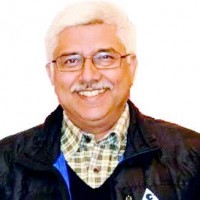Journalists Should Uphold Public Trust
Dr. Kundan Aryal
A recent verdict of a district court in Nepal has strongly reminded that journalists must abide by the journalistic code of ethics to maintain the public trust. In a series of such verdicts, the media people have been punished time and again. The recent one could also be considered as another eye-opener for the media practitioners.
Surkhet district court’s verdict that slapped a five-month-long imprisonment on a journalist for violating the right to privacy of a raped girl is in line with the journalistic code of ethics. It could also be considered as a warning against those involving in unethical practice. Journalists Code of Ethics, 2016, under the subheading of Respect for Right to Privacy, states that journalists and mass media should respect individuals’ right to privacy. The ethical standards ensure that while quoting the source, the name and identity of the source should be kept confidential to avoid any serious damage to the source.
Universal standard
Universal standard of journalism regarding the respect for the right to privacy has been incorporated in Nepal’s media law. The code of conduct of Nepali journalists ensures it. Moreover, whenever a person starts a journalism carrier, s/he needs to know the relevant rules and regulations as well as professional and ethical standards. However, there are growing cases of non-abidance of the professional ethic in the field. Moreover, there is a specific directive on reporting women which also ensures an individual's rights to privacy and instructs media and journalists not to disclose the identity of women in such incidents. Nepali judiciary has a clear verdict reinforcing the ethics of journalism.
Non-abidance of code of ethics arises from unawareness of basic journalistic standards. Professional journalists in Nepal are trying their best to address this problem. But, the general public has started to think that the violation of ethical standards is the result of the communicators' undue attempt to sell the product or post clickbait. Subsequently, the courts have stepped up to do away with such anomalies that need to be tackled differently.
Against this backdrop, the verdict of Surkhet district court came with a strong measure against the attempts of second-level victimisation of a girl who is a survivor of rape. At first, she was victimised by the rapists and then the media did harm her by exposing her privacy. The chief of Raptipaschim.com is sentenced to five-month-long imprisonment and a sum of Rs. 5,000 as penalties. However, the court has put a condition that in case of apology on the part of that online news portal, the imprisonment will be waived.
In 1947, Professor Robert Maynard Hutchins, chairman of the Commission on Freedom of the Press in the US, concludes that the freedom of the press is in danger for three reasons. His report ‘A Free and Responsible Press’, which is considered as the source of the prevalent social responsibility theory of media, first argues that the importance of the press to the people has greatly increased with the development of the press as an instrument of mass communication. But, he also notes that at the same time the development of the press as an instrument of mass communication has greatly decreased the proportion of the people who can express their opinions and ideas through the press.
His second argument is that the few who can use the machinery of the press as an instrument of mass communication have not provided a service adequate to the needs of the society. His third premise concerning the danger before the press freedom is that those who direct the machinery of the press have engaged from time to time in practices which the society condemns and which, if continued, it will inevitably undertake to regulate or control.
Noble attempt
Surkhet district court's verdict has once again reminded Hutchins’s commission report by drawing the attention of the Federation of Nepali Journalists, an umbrella organisation of journalists in Nepal. It could be considered a noble attempt to hold the power centres in Kathmandu accountable. There could be a debate on verdict of the court that should not imprison a journalist over the news report. However, this has raised at least two questions in this regard.
First, as all kinds of printed paper cannot be termed as newspaper, can any content disseminated through the digital platform be considered as online journalism? Second, the court has given second chance to the offender that in case of apology, he would be pardoned for his offence. If the issue would have been of political nature, such a verdict could be criticised as an attempt to undermine pluralism.
The instruments of mass media can be misused by a handful of people. Likewise, every journalist should abide by the universal doctrine of not harming anyone. However, as Hutchins argues when an instrument of prime importance to all the people is under the control of a few people who do not pose wisdom, the media would fail to serve people. Historical instances have shown that the media fails to uphold the public trust when they violate professional standards and ethics.
(Dr. Aryal is associated with the Central Department of Journalism and Mass Communication of Tribhuvan University.)
Recent News

Do not make expressions casting dout on election: EC
14 Apr, 2022
CM Bhatta says may New Year 2079 BS inspire positive thinking
14 Apr, 2022
Three new cases, 44 recoveries in 24 hours
14 Apr, 2022
689 climbers of 84 teams so far acquire permits for climbing various peaks this spring season
14 Apr, 2022
How the rising cost of living crisis is impacting Nepal
14 Apr, 2022
US military confirms an interstellar meteor collided with Earth
14 Apr, 2022
Valneva Covid vaccine approved for use in UK
14 Apr, 2022
Chair Prachanda highlights need of unity among Maoist, Communist forces
14 Apr, 2022
Ranbir Kapoor and Alia Bhatt: Bollywood toasts star couple on wedding
14 Apr, 2022
President Bhandari confers decorations (Photo Feature)
14 Apr, 2022











